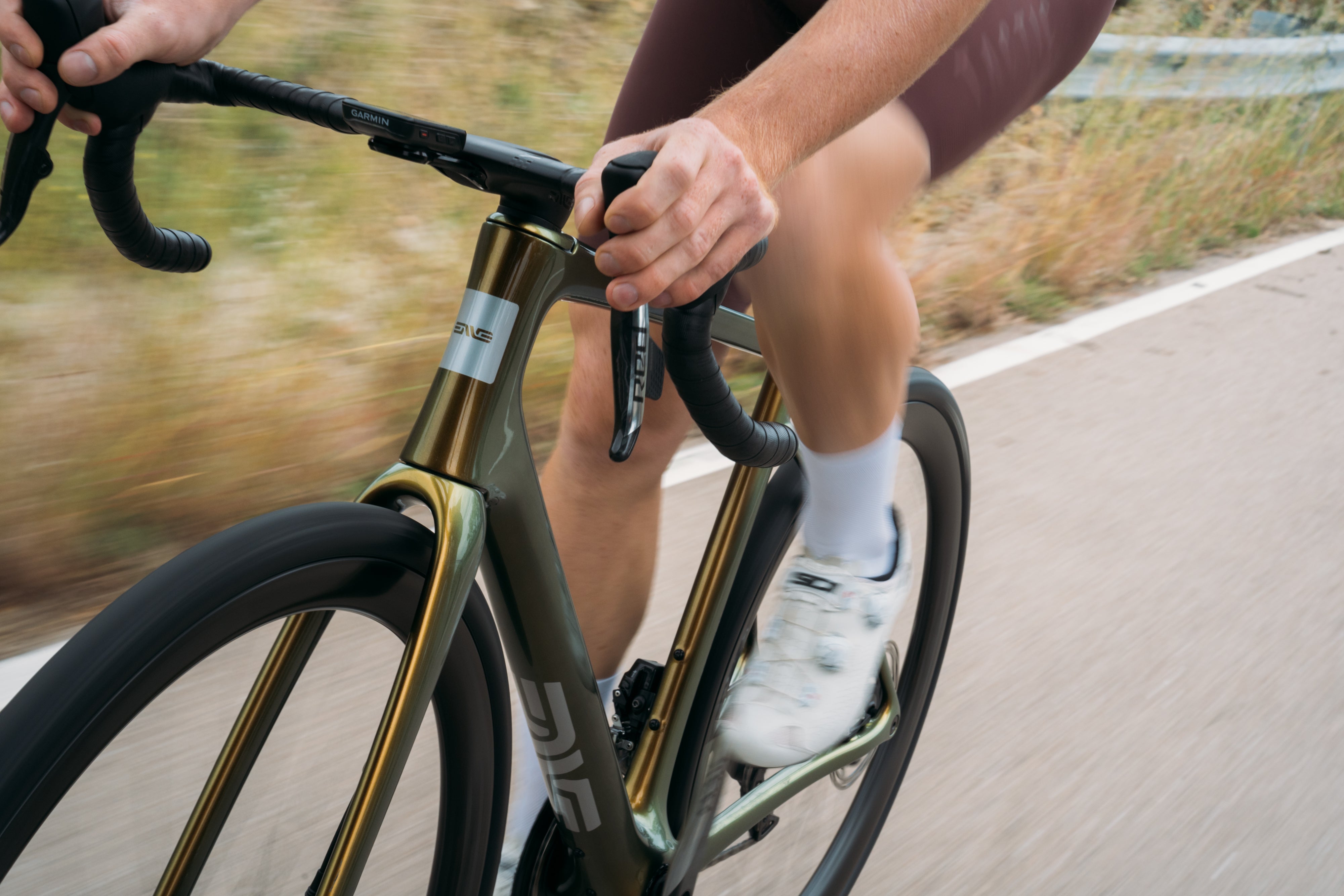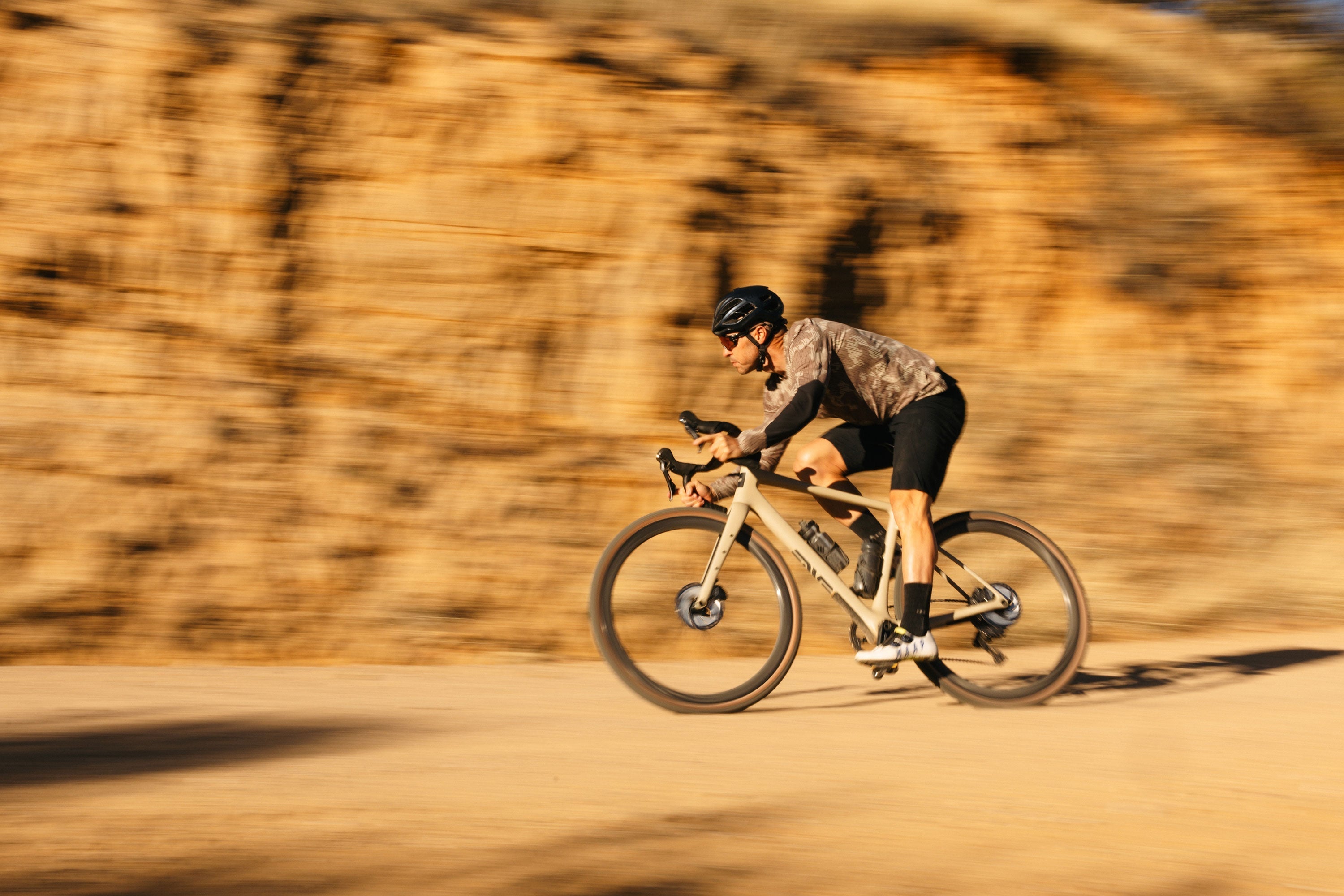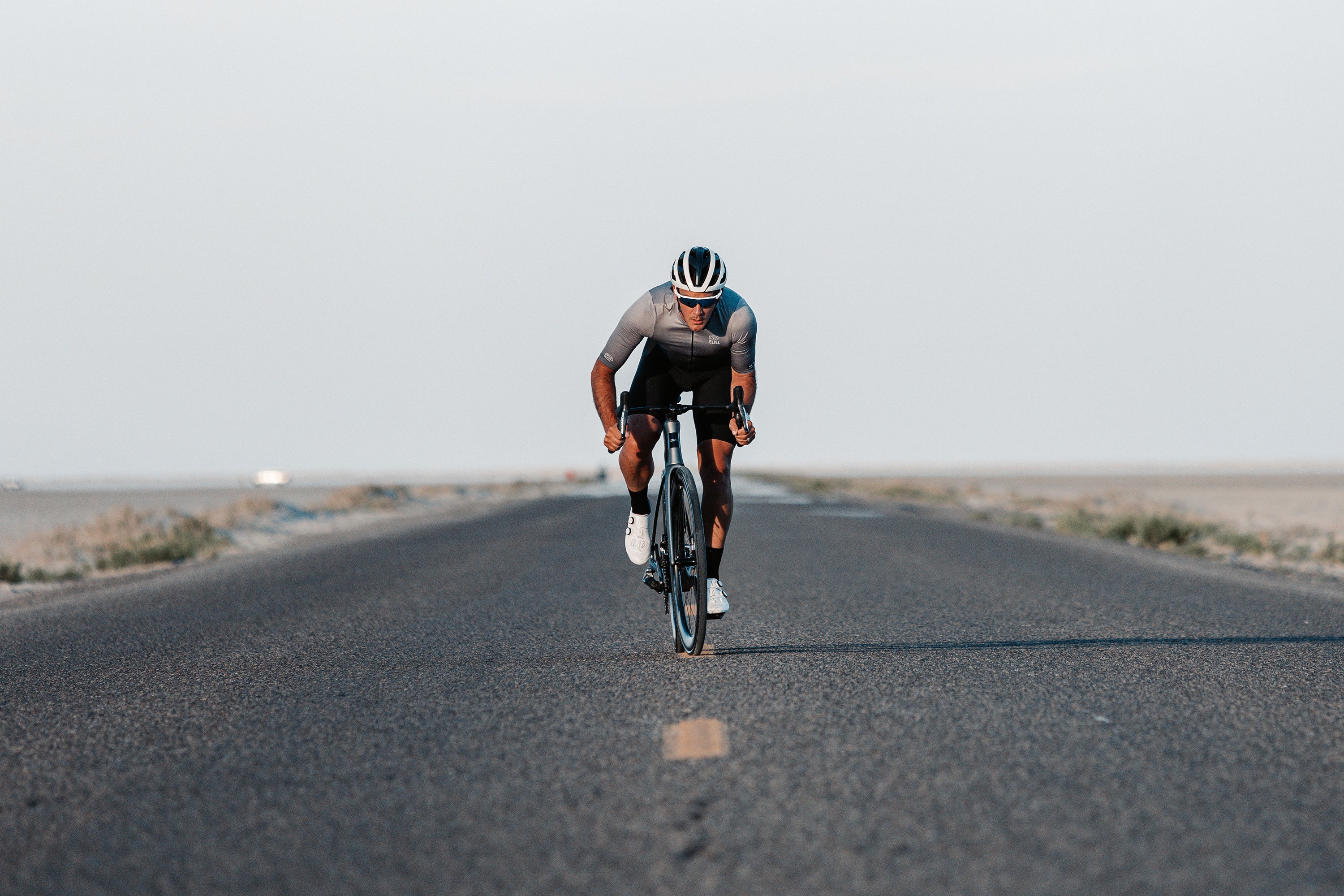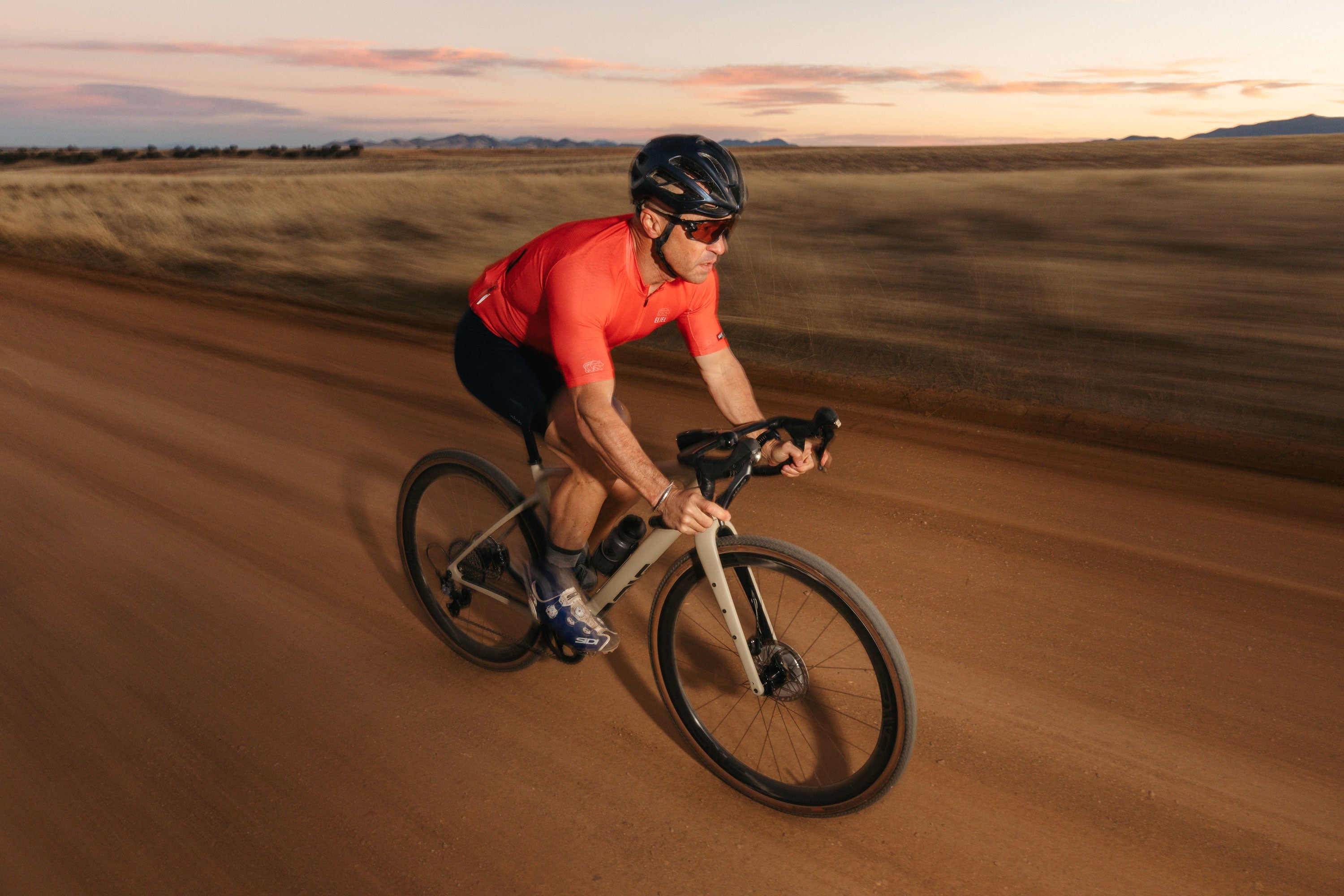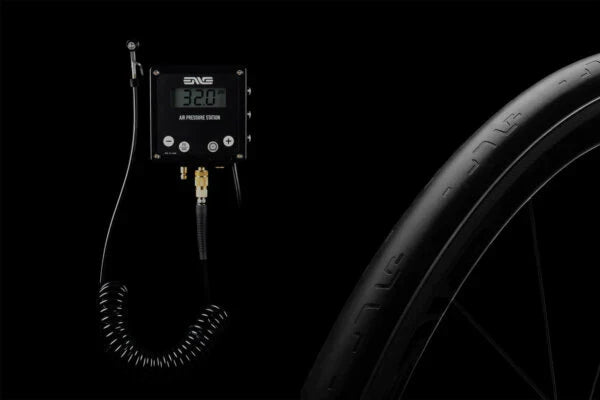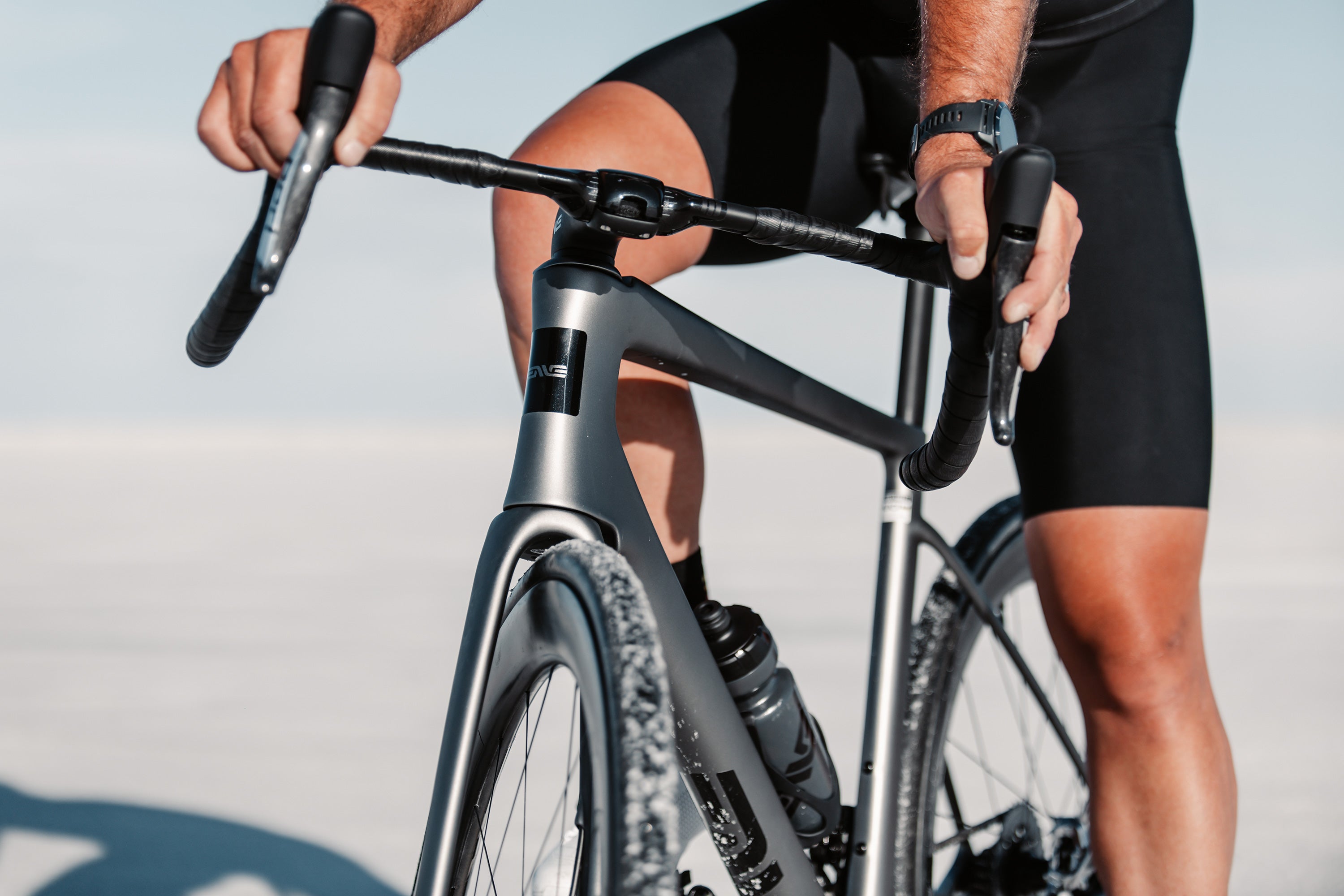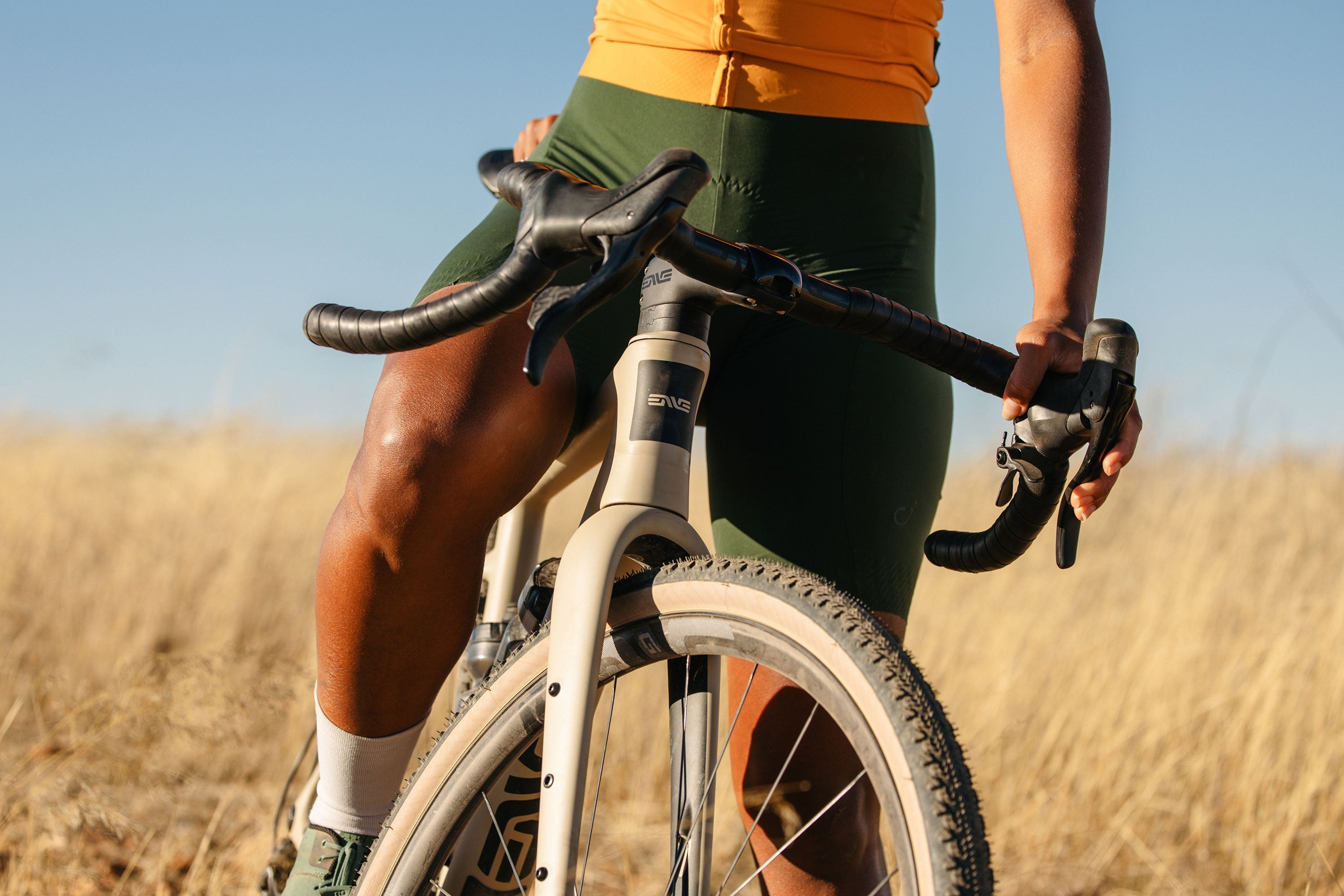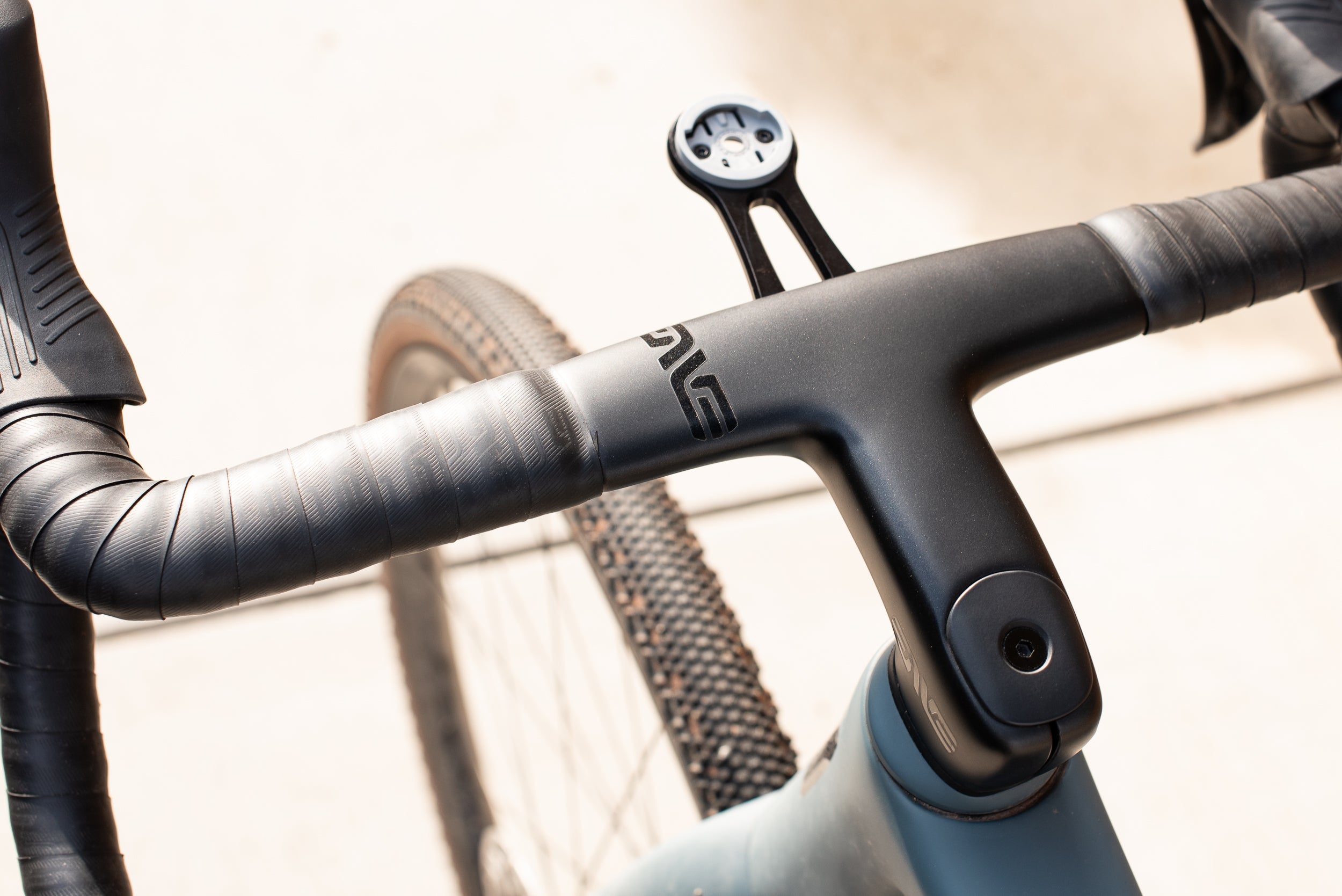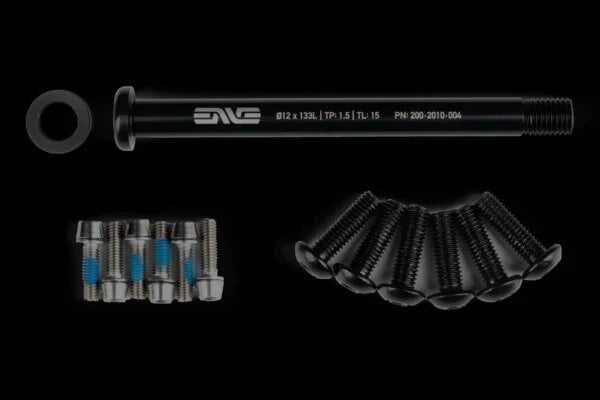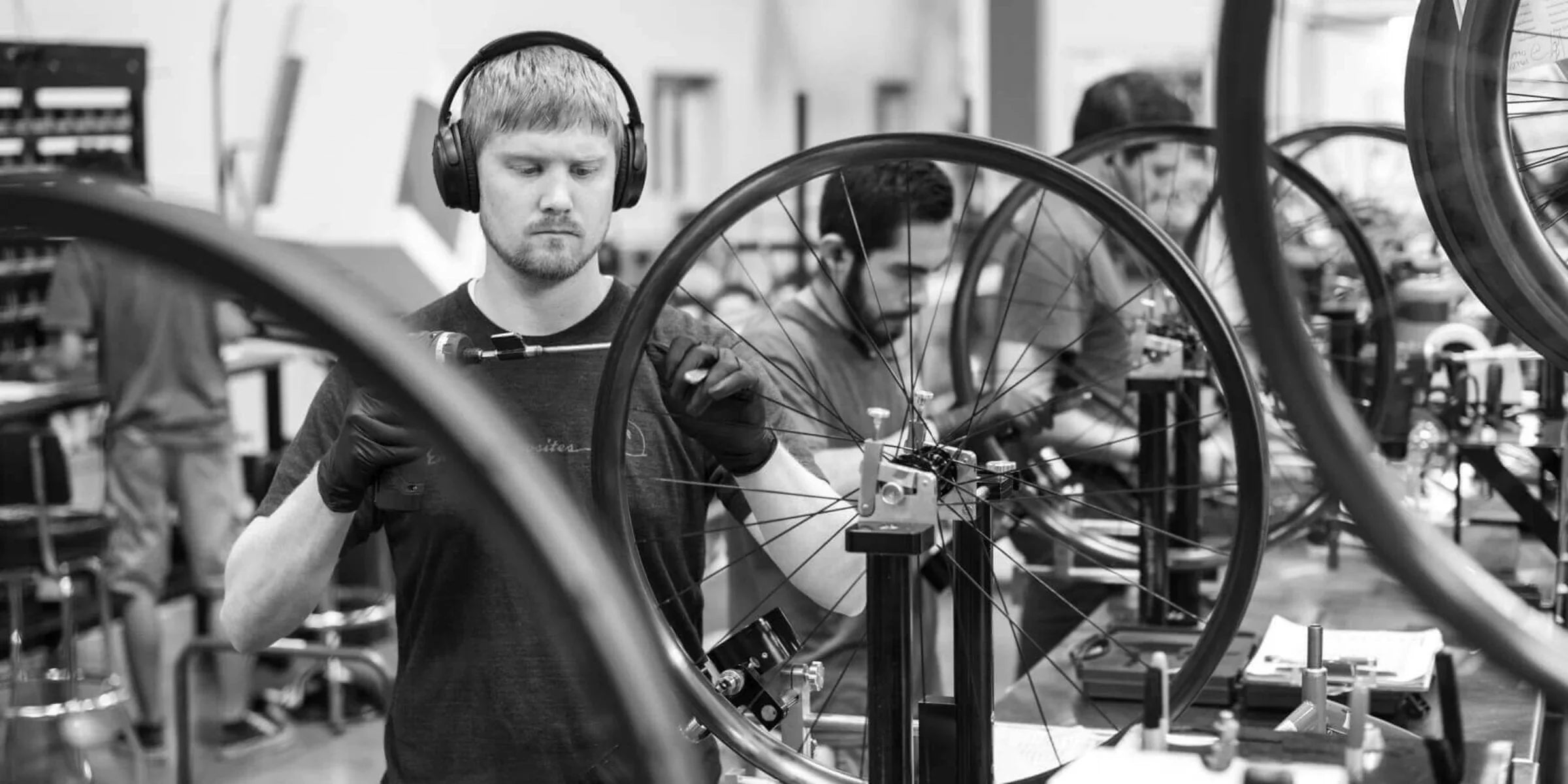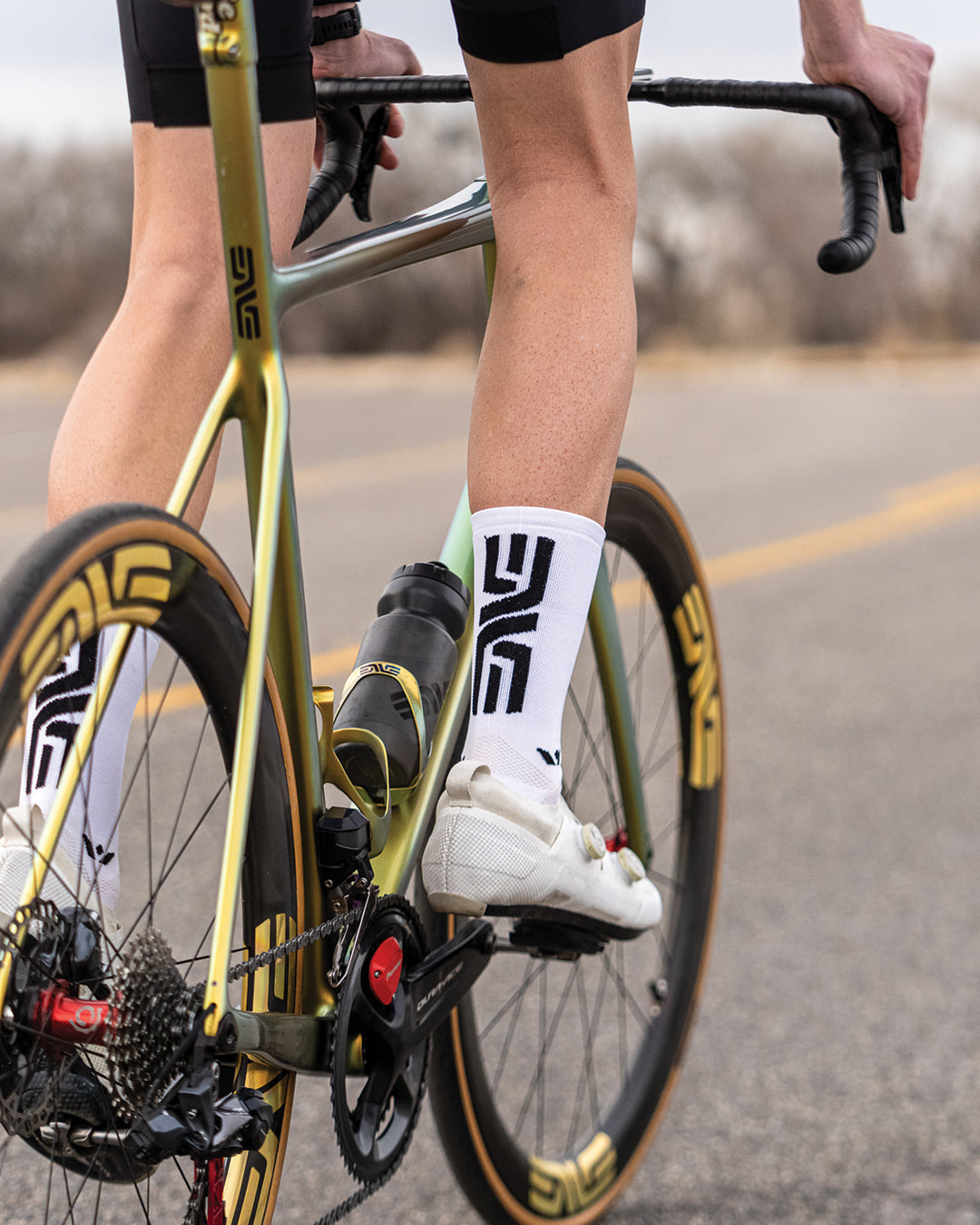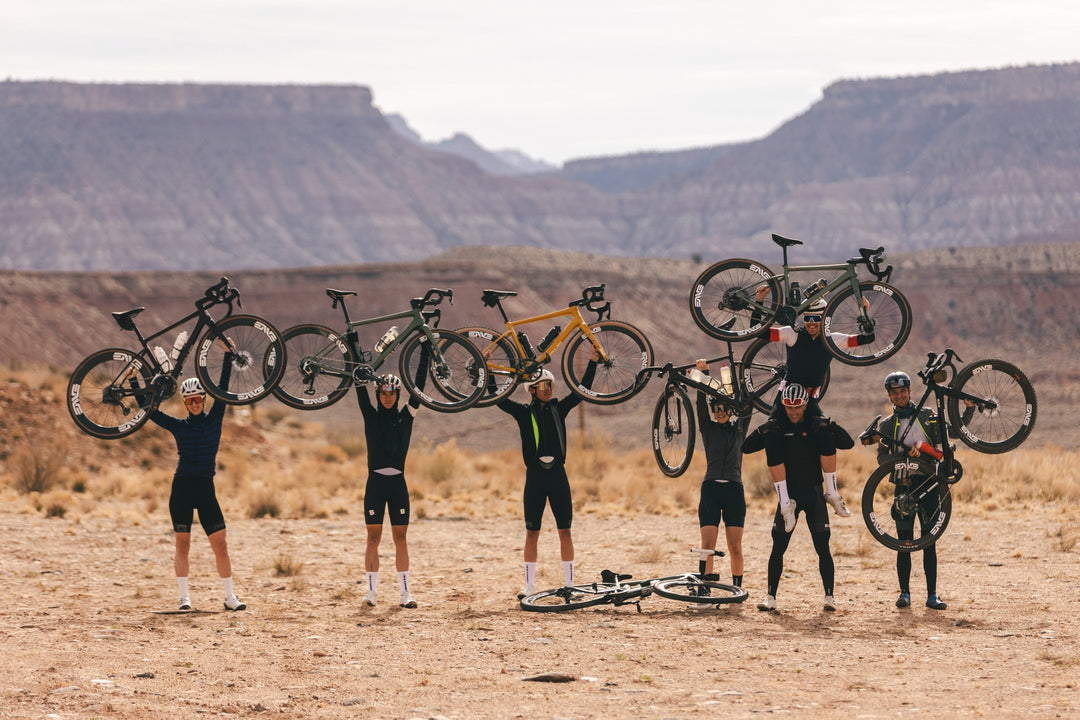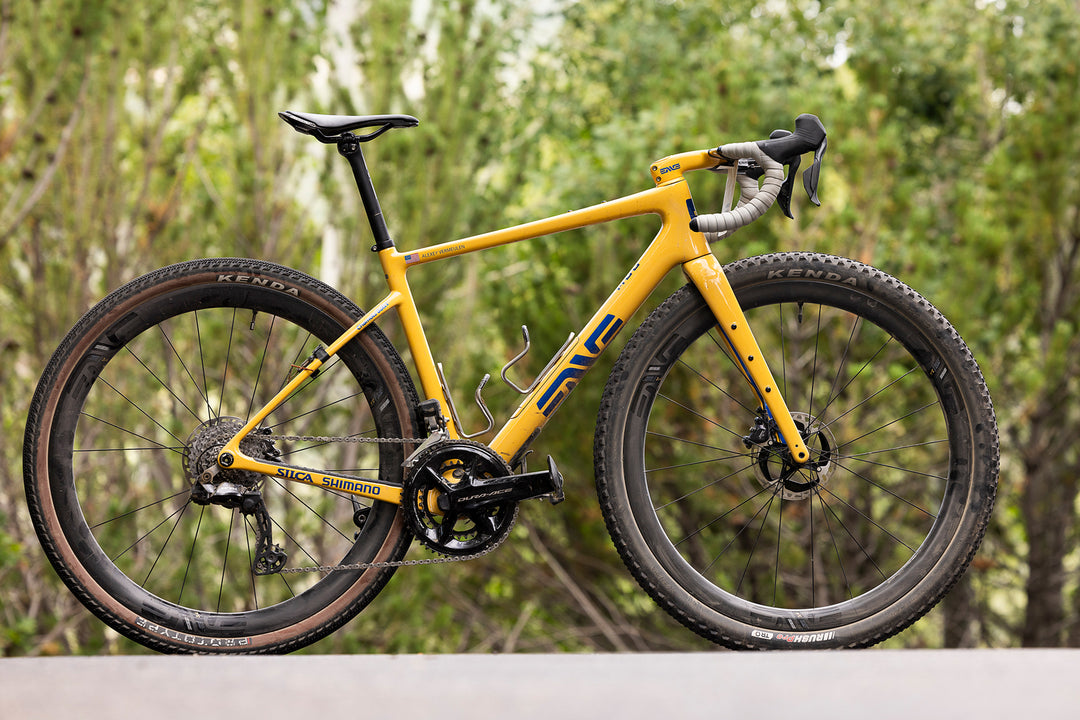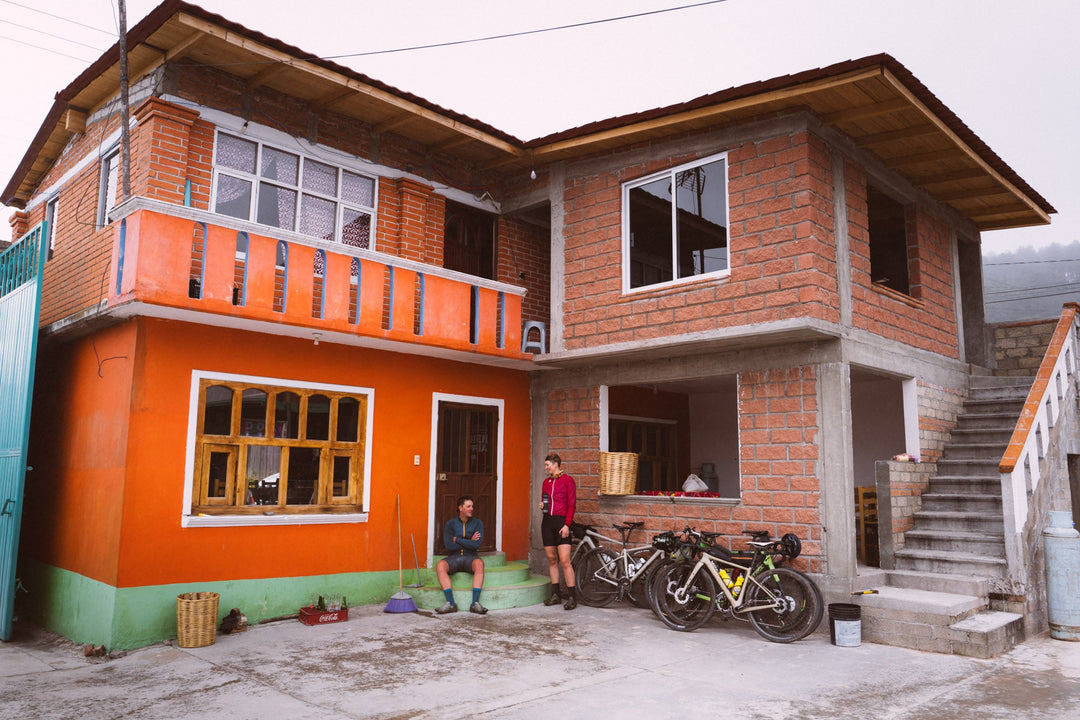BWR Winner And Coach Brian McCulloch Shares His Everesting How-To
When Brian McCulloch reflects back on some of the biggest days he’s had on a bike, which includes racing in the Tour of Utah, Tour of Taiwan, Unbound (Formerly DK200), and winning the Belgian Waffle Ride in 2018, none of them quite match what he’s set his sights on in the coming days as part of the Giddy Up Challenge. The 29,029 feet Brian will be ascending in order to complete his Everesting goal will be significantly bigger than anything he’s ever done in the past. As a coach, that challenge only makes him more excited to dial in his nutritional and training plan, in addition to some equipment changes. Read how Brian is approaching his big day and what everyone can learn from his thought process.
Frameset: BMC Road Machine
Wheels: ENVE SES 3.4 AR
Tires: IRC Formula Tubeless 28c
Gearing: Shimano Dura-Ace 34/52 chainrings with an 11-32t cassette
Computer: Garmin Edge 520 w/ external battery back-up
Apparel: Big Wheel Coaching Edition VR7 jersey and bibs
Nutrition/hydration: GQ-6 3:2:1 Hydration, Monster Hydro, and water. SNAAK Bars, energy bars packed with superfoods.
Real food snacks: Peanut butter & jelly sandwiches, dates, fig newtons, and apple pie. The climb I am using, Oak Glen, is known for its apples and delicious apple pie!




Are you making any equipment modifications for your Everesting attempt?
Yes, I have been experimenting with a 34t inner chainring paired with a 52t outer ring on my Dura-Ace Power Meter crankset. Although this is not an officially supported Shimano combination for optimized shifting, it is worth the compromise. My sector of road is sufficiently steep that the 34t small ring will keep my average cadence reasonably quick despite the deep fatigue I expect late into the attempt. The 52t outer ring is important to get down the hill as quickly as possible.
What climb are you Everesting on?
Oak Glen (lower portion), Redlands, California
Length: 4.35 miles
Average grade: 6%
Elevation gain: 1,354 feet
I’m using a portion of the iconic Oak Glen climb that I live at the base of. The lower portion of the climb has an average gradient of 6%. It’s a very steady and scenic, yet demanding climb.
Why did you choose this particular climb?
After testing various climbs in the area (four to be exact) the climb from the base of Oak Glen about 2/3 of the way up makes the most sense. It has a wide shoulder, some shaded sectors, a steady grade, parking lots at the top and bottom of the climb, not to mention safe/easy turnarounds. Additionally, this segment has a mid-climb bathroom/water stop making it easy to stage equipment or support at three points (beginning, middle, end) of the course.
Lastly, and maybe most importantly, the start of this climb is only a 10-minute ride from my home, meaning I can ride from home, spend the day on the bike, accomplish the goal, and get home for a shower and food straight away. Because everyone knows food is all that will be on my mind after 29,029’ of climbing!
Do you have a strategy in mind for how you plan to accomplish the challenge?
I have set wattage targets and rough ascent/descent times based on training sessions that I am looking to follow. However, I am very mindful that this particular climb is exposed and thus the wind is likely to shift, tailwind climb in the morning (headwind descent) to headwind climb in the afternoon.
This could prove problematic as the headwind climb comes when I will be the most fatigued. To counter that, I am working on pacing strategies that allow me to accomplish the majority of the climbing early in the day so that I do not have to “rush” or get stressed if the last few climbs are significantly slower due to wind, heat, or fatigue.
Have you ever Everested before?
This is my first attempt at Everesting, which is both exciting and scary. My biggest ride has been 204 miles with 21,000’ of climbing in approximately 13 hours. It was a brutal day. When I think of doing this challenge, it may not be my biggest ride in mileage, but the sheer workload of the day is daunting. In regard to energy expenditure (calories burned/effort expended) I expect this to be the hardest bike ride I have ever done.
An extra 9,000’ of climbing might not seem like all that much when compared to the entirety of 29,029’, but in terms of percentage, 1/3 of the ride still remains to reach the goal over and above my previous ‘biggest ride’. And all that climbing is done when you are most tired, hot, and challenged by the wind.
Are you doing any specific training for it?
I live at the base of the San Bernardino Mountains and climb regularly, but I have had to add focused climbing efforts. Instead of doing hour-long climbs (or longer), I have shortened the segments doing more ‘repeats’ on 10 to 20 minute climbs to get my climbing speed up.
Additionally, I have been adding more yoga (vinyasa flow) to my off-the-bike routine in order to properly strengthen my core/support muscles since I will be on the bike the majority of the day. More than strong legs, I will need a strong core to support myself for this grueling effort.
What made you decide you wanted to be a part of this?
Now is a great time to saddle-up and do something epic for a great cause. I love doing big days on the bike and Everesting is the next logical step for an endurance guy like me.
What do you anticipate being the hardest part of the day?
Remaining disciplined to the hydration/nutrition consumption necessary to be successful. It’s all too easy to “get into the work” of the day and just pedal. But the danger is coming up short on energy or experiencing severe cramps that then require breaks to release/overcome. I think of this ride as “eating my way through the day”, but that is much easier said than done. As the effort of the day drags on, it’s easy to skip eating and drinking at the required durations.
Staying well fueled despite fatigue and boredom is a challenge every Everester must face!
Follow Brian McCulloch on Instagram and see how his Eversting attempt goes, at @bmconbike


